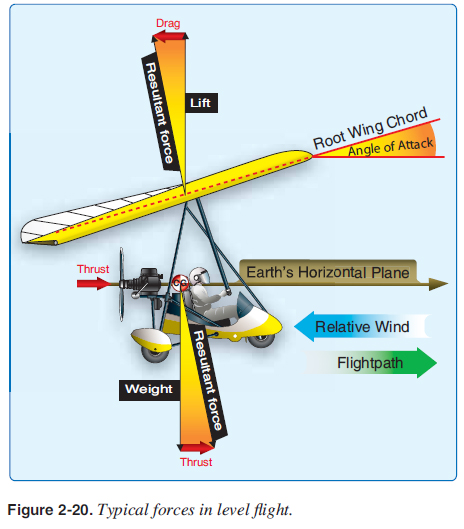
 |
|
||
CHAPTER 2. Aerodynamics Thrust At a constant air speed, the amount of thrust determines whether an aircraft climbs, fl ies level, or descends. With the engine idle or shut off, a pilot is descending or gliding down. Maintaining a constant airspeed, when enough thrust is added to produce level fl ight, the relative wind stream becomes horizontal with the Earth and the AOA remains about the same. As described for the airplane in the Pilotís Handbook of Aeronautical Knowledge, thrust equals total drag for level fl ight. [Figure 2-20]  When in straight and level, unaccelerated fl ight: Lift (L) = Weight (W) Thrust = Total Drag (DT) At a constant airspeed, when excess thrust is added to produce climbing fl ight, the relative air stream becomes an inclined plane leading upward while AOA remains about the same. The excess thrust determines the climb rate and climb angle of the fl ightpath. [Figure 2-21]  When in straight and climbing, unaccelerated fl ight: Lift (L) = Component of weight that opposes lift Weight (W) = Resultant force (FR) of lift (L) and excess thrust to climb (TE) Thrust = Total drag (DT) plus rearward component of weight Thrust Required for Increases in Speed Above the lowest total drag airspeed [Figure 2-18], faster speeds (lower angles of attack) for level and climbing fl ight requires greater thrust because of the increased drag created from the faster speeds. AOA is the primary control of increasing and decreasing speeds, and increasing thrust generally does not produce higher speeds, but additional thrust is required to maintain level fl ight at higher speeds. |
| ©AvStop Online Magazine Contact Us Return To Books |